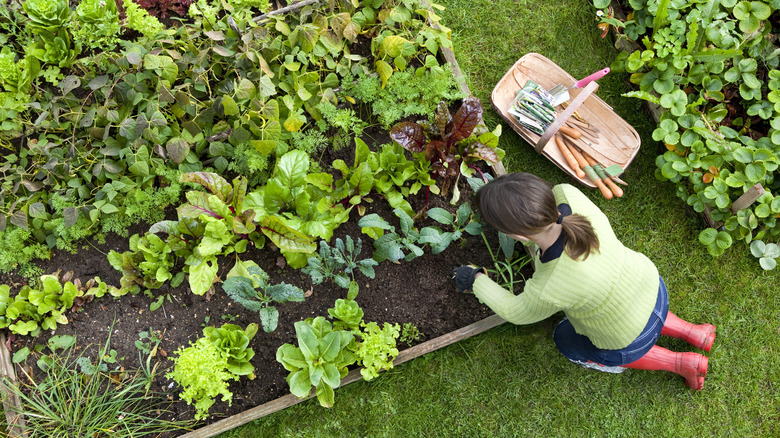To Keep Pests Out Of Your Garden, Give Your Veggies A Little Breathing Room
Starting a garden is an exciting time for many, as it adds a peaceful, welcoming touch to your home. Like many other things, the temptation to fill out your garden for a lush aesthetic is real. However, doing so will weaken your plants and attract unwanted pests. After all, overcrowding forces plants to compete for resources and creates moist, shaded areas that attract insects like aphids. Before starting your garden, it's best to understand the basics of companion planting. The short answer is to give your plants at least two to three rows of space. The long answer involves a practice called companion planting.
Essentially, this practice focuses on the relationships between plants. As you might guess, plants with a positive rapport should be closer together, while those with a negative rapport should be kept apart. Imagine you're creating a seating chart for your coworkers. Would you seat loud, extroverted salesman Chad next to the introverted, focused accountant Kathleen? Probably not. In a similar manner, while certain plants complement one another, they still need enough elbow room to thrive comfortably.
That said, tomato and basil should be planted within two to three rows of each other, since they have a positive relationship. Whereas plants with negative interactions must maintain a distance of at least two to three rows apart. Companion planting is an excellent hack for deterring garden pests thanks to the open space and added light that incests hate. However, there's another practice within companion planting that maximizes the space for any garden.
Companion planting's loophole for overcrowding
Overcrowding can be an issue even when growing the easiest herbs, and it can feel like you're not using all of your garden space. However, there is another technique that bypasses this issue and maximizes every inch of your garden. It's called interplanting, and when done correctly, it allows you to place different crops near each other and is especially effective for small gardens.
The idea is that you're taking advantage of seasonal weather patterns and the growth rate of specific species. During the cool season, you might plant a row of tomatoes that take much longer to grow next to a fast-growing vegetable like beets. The beets reach maturity much sooner during the cool season, and when the season changes, the tomatoes will start to thrive and provide shade to the beets, protecting them from overexposure.
Implementing companion planting and interplanting practices is a great approach to building a healthy, robust garden. The added vegetable diversity also offers various root systems that contribute to a healthy soil environment. Whether you're new to gardening or looking to improve your current one, companion planting is an excellent practice that leads to healthy, happy plants.

